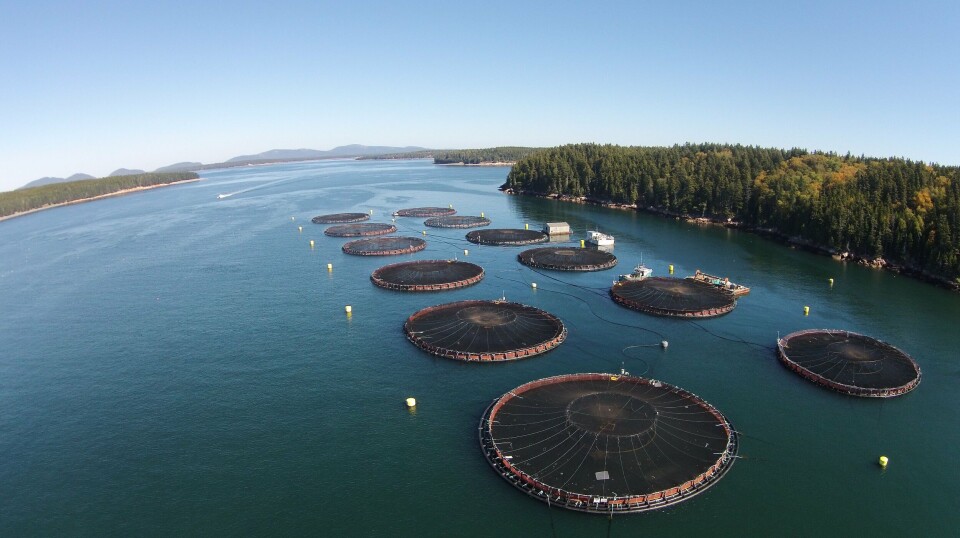
Cooke praises Maine's ‘science-based approach’ to stocking density
Salmon farmer Cooke Aquaculture has thanked lawmakers in Maine for amending a proposed limit on stocking density in marine net pens.
The bill was intended to block American Aquafarms’ 30,000-tonne-per-year semi-closed salmon development in Frenchman Bay, Hancock County, and was introduced by local Senator Nicole Grohoski.
American Aquafarms planned to stock fish at 40 kilograms per cubic metre of water, and Grohoski intended to sink the project or similar schemes by limiting stocking density in the state to 22kg/m³.
However, this would also have impacted Cooke’s open net pen farms in the state, which are stocked at 30kg/m³, and the bill was amended to set the limit at 30kg/m³. Maine governor Janet Mills signed the bill into law last week.
Coastal jobs
“We appreciate that Maine Legislators and the Governor took a consultative and science-based approach to finalise the bill at a stocking density in the lease area of up to 30 kilograms per cubic metre,” said Cooke’s vice president public relations Joel Richardson.
“Previous bills at 22 kilograms per cubic metre presented to the Maine Marine Resources Committee would have negatively impacted rural coastal jobs and restricted a producer’s ability to introduce new technologies and innovative equipment which otherwise enables aquaculture farms to operate even more sustainably.
“Every marine environment, including the Gulf of Maine, is biologically unique where aquaculture may occur and it’s important to apply that lens to regulations. All our Maine salmon farming operations are sustainably certified, and our people take great care to raise healthy, delicious salmon for grocery stores and restaurants across the USA.
97% water
“Stocking density on our Gulf of Maine salmon farms is approximately 97% water and 3% fish in the ocean cages. Stocking densities are kept low, so fish have room to swim, grow, and mimic natural schooling patterns. Farmers know that pristine marine conditions are essential for high-quality salmon, which is why farms are properly located in areas that allow for the natural assimilation of organic fish waste, and feed pellets are closely monitored with underwater cameras.
“The techniques that we use are both responsible and innovative - we are constantly researching and studying new ways to further reduce the already low environmental impact of salmon farming. Salmon farming is a climate-friendly, sustainable solution to local food production and food security, as no other kind of farming is as low-carbon footprint and environmentally low-impact.”
The new legal limit on stocking density has been welcomed by ocean conservation campaign group Oceana, which opposed the American Aquafarms plan.
Oceana said stocking density is a key metric of marine finfish aquaculture, with higher densities associated with diminished fish health and water quality. It added that limits on stocking density are critical to preventing disease and other threats, while also reducing the scale of die-offs and fish escapes.






















































